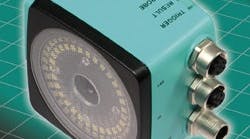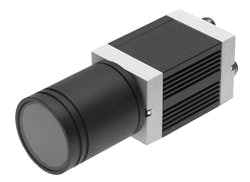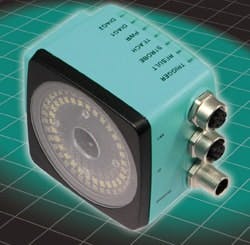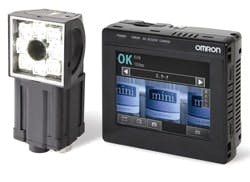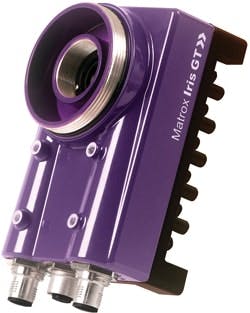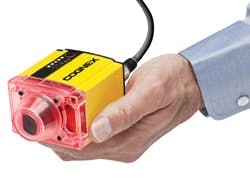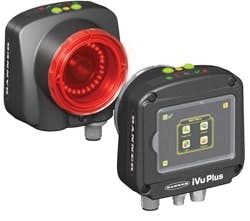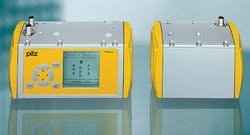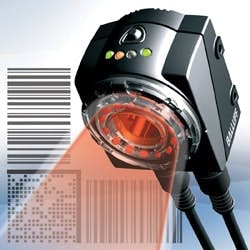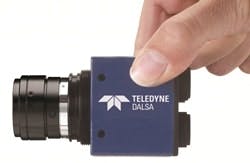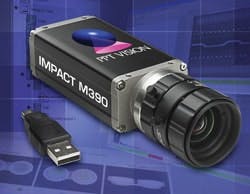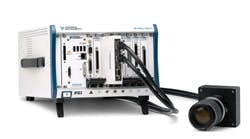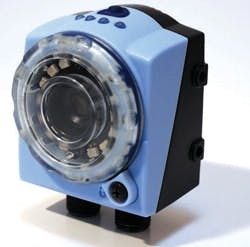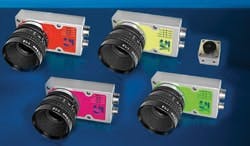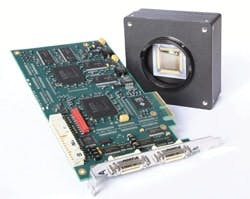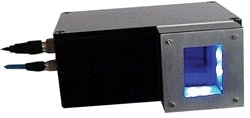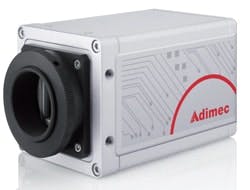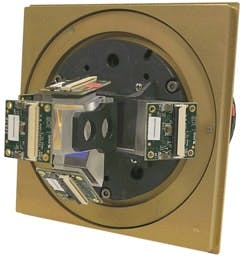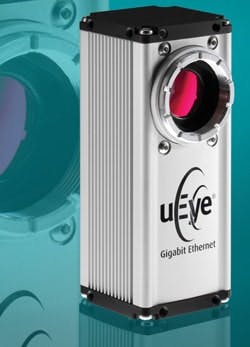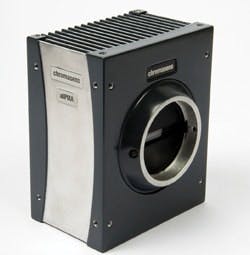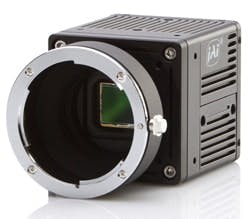Machine vision sales continue to grow, with system builders and integrators reporting strong interest in vision solutions, according to the Automated Imaging Assn. The organization's latest report recorded solid growth in all major machine vision supplier markets in 2010 (overall growth was 54%), with high hopes for 2011.
Improved computer processing power has been a major factor in the growth of the machine vision inspection market, according to Vijay Mathew, program manager, measurement and instrumentation, for Frost & Sullivan. "It has not only benefited existing application areas, but the increase in processing speed has opened the door to new applications, with algorithms getting more complex and camera capabilities improving," he says. "Web/inline inspection for high-throughput applications, where quality is of the highest importance, in industries ranging from automotive, aerospace, food and beverage, and pharmaceutical have benefited from advancement in computing technology. 100% inspection at production line speeds is becoming a reality. It has also opened the door to the 3D-based machine vision systems market."
The majority of cameras being introduced today have built-in FPGAs, which enables onboard image processing capabilities that improve processing speeds. Various technologies—sensors, FPGAs, DSPs, microprocessors, robotics and software advancements—combine to revolutionize machine vision systems and also make them more affordable, Mathew says. High-end applications in such fields as military or medical use complex algorithms and require high-speed computational capabilities.
It is such high-end applications that will benefit most from a relatively new interface standard called CoaXPress, which enables the transmission of data from a device to host at speeds of up to 6.25 Gbps over a single coax cable. Originally developed by Adimec, Active Silicon and Components Express and introduced in late 2009, CoaXPress now is hosted by the Japan Industrial Imaging Assn. (JIIA) and more recently supported by AIA and the European Machine Vision Assn. (EMVA).
"The machine vision industry benefits from this new standard because of the advancement of new CMOS sensor-based cameras that are able to combine large pixel arrays (>4 Mpixel) at very high speeds (>100 fps) for area-scan cameras," says Joost van Kuijk, vice president of marketing and technology at Adimec, which recently released the first production-ready camera for use with the new interface standard. "Another big driver for the CoaXPress technology is the need for high-speed data rates for line-scan cameras."
In high-end applications, it is not just the higher speeds that are attractive, but the combination of high speed, flexible cabling and long transmission distances, van Kuijk says. "We already see two main categories of customers for our CoaXPress solutions. The first are the high-data-rate customers that would otherwise require multiple (up to four) CameraLink cables to transport the data from the camera to the frame grabber," he says. "At these higher data rates the travel distance will be short — less than 10-15 m — and the cables become very costly. A single or dual flexible coax cable reduces the overall system cost." The second type of customer is upgrading existing, often analog, systems with coax cable installed, he adds.
Overall, the adoption and application of Ethernet for connecting cameras continues to grow. "The buzz around GigE continues, strengthened by updates to the GigE Vision standard and the easy availability of components with a GigE interface (cameras, switches, etc.)," Mathew says. "This trend was particularly strong in 2009 and 2010, with reports indicating that sales of cameras with GigE interfaces overtook other popular interfaces for the first time. The benefits include lower costs, easy cabling, scalability and simpler integration."
SBOC-Q/SBOI-Q vision system has an embedded PLC via CoDeSys. The camera, with integrated CANopen master, drives motion and I/O devices as a self-contained system. Communication is via Ethernet. Integrated into the system are the imaging sensor system, a complete electronic evaluation unit and interfaces.
Festo
800/99-festo
www.festo.com/us
Sheet Monitor
BIS510 Vision Sensor provides simple monitoring of the correct sheet sequence in collating, folding and binding machines. The sensor includes a camera, illumination LEDs, and an evaluation unit with digital input and output signals, as well as a network interface. It has integrated error image memory, and provides image and barcode recognition at up to 10 pages/s, with a maximum sheet speed of 4 m/s.
Pepperl+Fuchs
330/486-0001
www.pepperl-fuchs.us
Millions of Colors
FQ-series vision sensors combine high-speed, true-color processing with built-in high-power LED lighting and lens. It has a choice of PC or TouchFinder terminal for setup and monitoring, and incorporates up to 16.7 million color processing and built-in polarizing and halation filters to remove glare. Models offer up to 32 simultaneous inspections within a scene.
Omron Electronics
866/88-omron
www.omron247.com
Five MPs
Matrox Iris GT smart camera offers a 5 Mpixel monochrome CCD sensor, is powered by an Intel Atom 1.6 GHz processor, runs Windows CE 6.0 or Windows XPe, and has an integrated graphics controller with VGA output, 512 MB DDR2 memory, and a 2 GB flash disk. The device is housed in a sturdy, dust-proof and washable IP67-rated casing.
Matrox Imaging
514/685-2630
www.matrox.com
DataMan 500 image-based barcode reader achieves higher read rates by reading damaged, distorted, blurred, scratched, low-height and low-contrast 1D barcodes. It processes images at up to 1,000 fps and can read codes in any orientation, 2D codes such as Data Matrix and QR, and multiple codes in the same image, and includes auto-trigger, auto-focus and "no read" feedback.
Cognex
508/650-3000
www.cognex.com
No PC Required
iVu series TG image sensor has the simplicity of a photoelectric sensor and the intelligence of a vision sensor. With three sensor types in one package and integrated or external lighting, users can select either the traditional iVu image sensor with the integrated touchscreen or a remote iVu image sensor, which uses the remote touchscreen display. One display can be hot-swapped between multiple remote sensors.
Banner Engineering
888/373-6767
www.bannerengineering.com
Very Important Protection
PSENvip camera-based mobile protection system monitors press brakes. Installed on the upper die, the system detects any foreign body in the protected field between the transmitter and receiver. The visible light beams are transmitted to the receiver via a telecentric lens (vision parallel). It is insensitive to reflections and external/diffused light, as well as vibration and temperature stratification.
Pilz Automation Safety
734/354-0272
www.pilzusa.com
Sharpshooter ID vision sensor reads a range of linear barcodes and 2D Data Matrix codes, along with optical character verification (OCV). With higher-resolution algorithms for code reading at 640x480-pixel resolution, the reader is ECC200-compliant and includes an Ethernet and serial communication port as well as pass/fail I/O.
Balluff
800/543-8390
www.balluff.com
BOA IDR image-based ID reader has 1D and 2D capabilities and trainable character and pattern recognition tools. It has Ethernet communication for remote monitoring, user administration for CFR Part 11 validation, IP67-rated enclosure with lens cap, and direct connection to external light sources.
Teledyne Dalsa
978/670-2035
www.teledynedalsa.com/mv
Make an Impact
M-390 cameras can be used as part of Impact M-Series, a single system with four independently operating cameras running distinct inspection, guidance or identification programs. Operators can mix and match camera resolutions. The camera provides 16x the resolution of 640x480 cameras, and is equipped with an optional right angle view.
PPT Vision
952/996-9500
www.pptvision.com
NI 1483 Camera Link adapter module combined with an NI FlexRIO FPGA board puts vision and control algorithms directly on FPGAs to process and analyze an image in real time with little to no CPU intervention. The module supports base-, medium- and full-configuration Camera Link devices as well as 80-bit 10-tap configurations, all to 85 MHz. I/O options include four TTL I/O lines, two opto-isolated inputs and one quadrature encoder input.
National Instruments
800/258-7022
www.ni.com/vision
NINE TOOLS
Datasensor SVS vision sensors have a frame rate of 60 fps (60 images/sec), Ethernet communication, a teach button, 640x480 pixel resolution and nine inspection tools, including pattern match, positioning verification, edge count, contrast comparison, 360° pattern match, contour match, width comparison, brightness check and character verification. The smart vision sensors are available in two product lines. SVS1 models provide setup via handheld configurator, and SVS2 models can be connected to a PC and offer multiple controls.
IDEC
800/262-idec
www.idec-ds.com
NanoCam
VC nano camera series is based on a board populated on both sides to reduce dimensions to 40x65 or 80x45x20 mm. Models are available with remote camera head and IP68 enclosure, including lenses and lighting.
Vision Components
+49 7243/216-716
www.vision-components.com
PCIe x4 frame grabber supports Basler's A406k/kc Camera Link camera at its full bandwidth. It reaches a transfer rate of 837 MBps in a 10 tap, full configuration mode at the camera's full 2320x1726-pixel resolution and repetition rate of 209 frames per second. Data is transmitted via a DMA channel into the host RAM, so additional processing for image reconstruction is not necessary.
Silicon Software
+49 0 621-789-507-0
www.silicon-software.com
Chip Check
SemiCheck sensor with ChipControl command set for the semiconductor industry includes complete evaluation software, lens and lighting. The processor handles cycle times below 100 msec. Integrated interface provides a direct coupling to the machine via 24 V interface.
EVT Vision
+49 721-626905-82
www.evt-web.com
Opal Series 1-8 Mpixel CCD cameras are compliant with CoaXPress digital interface specification that allows transmission of high-speed data from a camera to a frame grabber at up to 6.25 Gbps over a single coax cable. For communication from host to device, a 20 Mbps uplink allows for control and configuration data. Power is provided over the cable at 24 V, up to 13 W per cable.
Adimec
+31 40-2353900
www.adimec.com
Seen and Unseen
Condor 1000 MS5 for image capture of visible and near-infrared bands combines five sensors on a spectral separation prism to cover the red, green and blue bands; two additional sensors cover the near-infrared range. It supports frame rates to 150 fps, maximum bandwidth of 210 MBps and hosts Camera Link, GigE and optical fiber interfaces. The sensors can be individually controlled. It supports five 32-bit processors, five multi-pixel coprocessors, and onboard processing for high volumes of data.
Alternative Vision
520/615-4073
www.alt-vision.com
Right-Angle Capture
uEye UI-5490HE GigE camera has optional 90° angled housing for flexibility in tight spaces. Capable of 10 Mpixel images of 3840 x 2784 pixels with 1.67 µm, square pixels at 8 fps, image data from Aptina ½ in. CMOS sensor is output with up to 12-bit depth per channel. An internal FPGA has 64 MB image memory. Features include binning and area of interest, which allow 37 fps at 1920x1080 resolution.
IDS
781/787-0048
www.ids-imaging.com
All Ready
allPixa color line scan camera increases line frequency to 96 kHz, with maximum transfer rates of 450 MBps. Trilinear CCD color line scan sensors with a pixel size of 10 µm enable image capturing with 1024-, 2048-, 4096- and 7300-pixel resolutions. The resolution of the A/D conversion is 14 bit, and the camera has a flexible programmable, digital I/O interface for LVDS, LVTTL, RS-422 signals, alongside trigger input and output.
Chromasens
+49 (0)7531-8760
www.chromasens.de
Tap Into High Resolution
AM-800CL (monochrome) and AB-800CL (color) 8 Mpixel CCD cameras have quad-tap sensor from Kodak, capable of providing 3296x2472 resolution at 17 fps in monochrome or raw Bayer formats. Camera Link digital interface supports 8-, 10- or 12-bit output. The AB-800CL can perform internal color interpolation, producing 24-bit RGB output at 8.5 fps.
JAI
800/445-5444
www.jai.com
Vision Engine
iPort NTx-Pro IP engine adds GigE connectivity to cameras and systems. The NTx-Pro board includes an FPGA with its 2 MB of onboard SRAM and up to 128 MB of frame buffer memory to enable a wide range of onboard processing options. The engine is available as an OEM board, reference design and FPGA IP core.
Pleora
613/270-0625
www.pleora.com
Sponsored Recommendations

Leaders relevant to this article:
